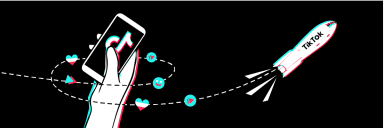By Ross Link, Global Marketing Analytics, Nielsen
With more people watching and buying online than ever before, advertisers are diving head first into digital to reach their audiences. Online advertising expenditures increased more than 25 percent (26.6%) year-over-year as of the second quarter of 2013, according to Nielsen’s Global AdView Pulse, and exceeds several traditional media categories. But are these investments worth their price?
Marketing mix models make up the industry gold standard for measuring marketing return on investment (ROI), as these statistical models correlate sales with marketing spend to determine how much specific marketing investments drive sales. However, some of these marketing mix models don’t break down the different aspects of digital media to determine the full effect of online advertising on sales. To better understand these factors, Nielsen convened seven of the leading global consumer packaged goods (CPG) companies, as well as Facebook and Google, to answer the billion dollar question, “What’s the best way to incorporate digital media into marketing mix models?”
Attention to Details
Nielsen’s study identified the key details necessary for a strong digital media component in a well-rounded marketing mix. It’s important to include the market in which the digital ad appeared, the device through which it was shown (computer versus mobile), and the viewer’s demographics. With click-through rates often below 1 percent, the study also found that clicks aren’t a good indication of incremental sales; delivered impressions are much more predictive of sales lift. For Facebook, for instance, the use of impressions rather than clicks within the model increased estimated sales lift and ROI by 75 percent.
The Right Impressions
While impressions are important indicators of sales lift, some impressions are better than others. Total digital impressions—or total impressions by publisher—can provide overly coarse metrics, underestimating ROI. The more detailed impressions identified in the study (such as those by publisher, market, device and demographic) can give companies a clearer picture into their digital investments. The worst models underestimated ROI from Facebook marketing and Google paid search by as much as 48 percent, and Google’s ROI was the most underestimated due to overly coarse metrics on average in all model types.
Better Metrics Giveth, but Network Effects Taketh Away
As the media landscape has become more complex, traditional and new media are interacting with each other and affecting final sales. The study demonstrated that paid searches drive sales but are often “assisted” by other media such as TV, Facebook and digital video ads. Therefore, the effects of these other media need to be teased out of paid search sales contributions. Advanced “network” models can recognize these media interactions and treat media—including (but not limited to) paid searches—that interact with other media as both outcome and input variables.
Methodology
Nielsen’s study was based on 12 major brands, 1.5 billion Facebook impressions, 600 million Google search impressions, and an analysis of $2 billion in sales. The data analyzed was from 5,000 grocery, drug, and mass merchandisers in the U.S. Nielsen convened seven of the leading global consumer product goods companies, plus Facebook and Google. The study identified key details that should be included in the model to deliver the most precise results.


